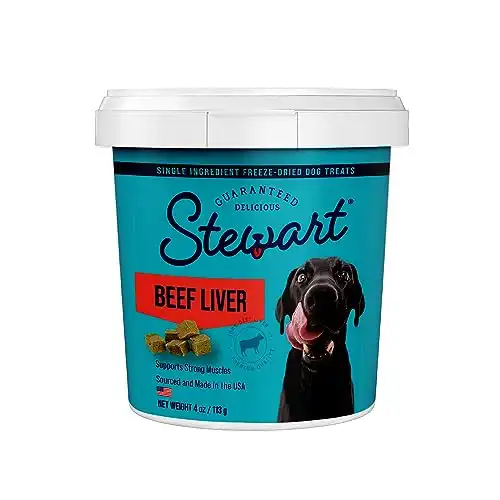Helping dogs have more fun with their humans!
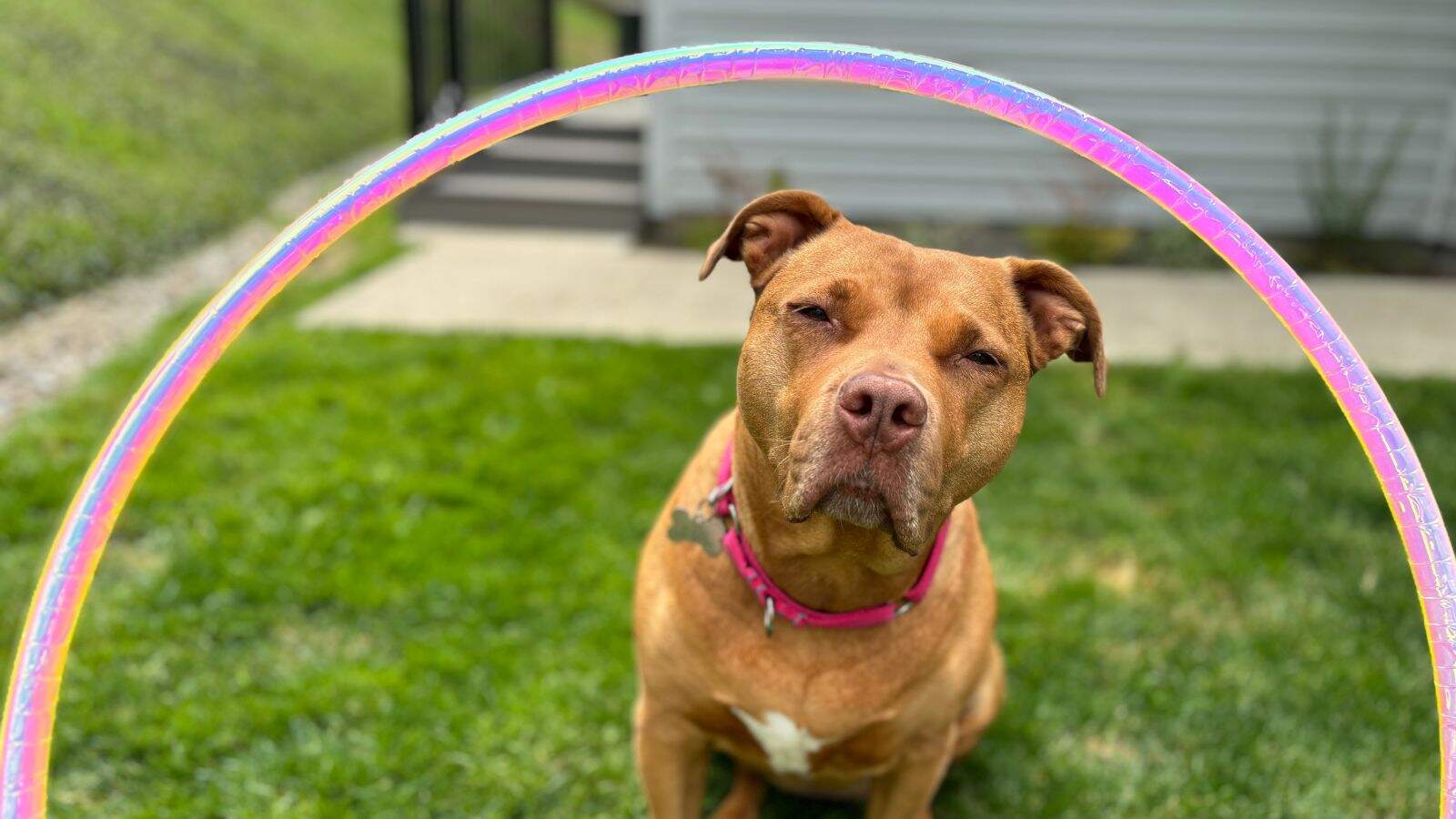

For the next part of our series on beginner dog agility for your pup, we’ll be taking you through the dog agility hoop, also known as a dog agility tire jump. We’ll walk you through common behavioral issues & fixes, as well as how to make or buy different pieces of equipment. Whether you’re inside or outside, want to build your own DIY dog agility hoop, or purchase equipment, we have a solution for everyone.
Fortunately, this behavior is straightforward and the equipment for the DIY hoop or pre-made supplies are both relatively inexpensive. In case you missed our first article, here’s our guide on how to make beginner dog agility equipment! We have links to our guides about beginner dog agility centralized in a convenient location.
Learning the behavior


Learning the behavior to use a dog agility hoop is typically easy for most pups. All we’ll have to persuade your pup to do is jump over and through something simultaneously.
Most pups are willing to complete this without difficulty, but if you have a pup who isn’t as willing on the first attempt, don’t worry! Check out our troubleshooting issues section and we’ll talk you through how to fix the two most common problems with a dog agility hoop!
Some notes before getting started
Before we start trying out a dog agility hoop jump, let’s review some important information.
We recommend placing your hoop so that your dog can jump from and land on a rug or carpet instead of vinyl or tile to help keep your dog from slipping. Outside this is less of an issue, but try to stay away from any slick surfaces, uneven ground, or any other problem areas that would make it difficult to complete the behavior safely.
As always, proceed carefully before starting any physical activity with your dog. If you are unsure if your dog can perform an activity, consult a relevant professional, trainer, or vet. This guide is for educational purposes based on our own experiences and what works for our pups, not all pups.
Teaching the behavior
Teaching your dog how to use a dog agility hoop is easy, as long as you take it slow! We like Puppr’s method for learning new behavior and model most of our training similarly. It’s easy to remember, works, and the criteria are easy to follow! If your pup can perform the requested behavior 9 out of 10 times, they’re ready to advance the difficulty slightly.
First, grab your hoop. Our favorite starting point is to use a hula hoop. You may have one around your house, but if you don’t, they’re extremely cheap and commonly available.
Second, try to get your pup to walk through the hoop when it’s touching the ground. It helps if you have a solid recall command or a good lure. One of our favorites is Stewart beef liver! Our pups go nuts for beef liver and it can be broken or cut into smaller pieces if you have a smaller pup. If your dog isn’t super compliant initially, try to grab a friend and have one person hold the hoop while the other lures the pup through the hoop. Check out our troubleshooting section for more help if you still have issues.
This is our (and our pups') favorite choice for beef liver! It's cheaper than a lot of other options and they go crazy for it! It's possible to cut it into smaller pieces to make it last longer.
Third, start raising the hoop! We recommend taking this step slowly and adjusting your height or repetitions based on your dog’s behavior. There will be plenty of time to increase the height or perform more jumps later.
That’s it! If you want to introduce a command like “hoop” or “jump” that’s fine! We recommend first waiting until your dog understands the behavior without a cue. This will help minimize confusion.
Some notes about safety
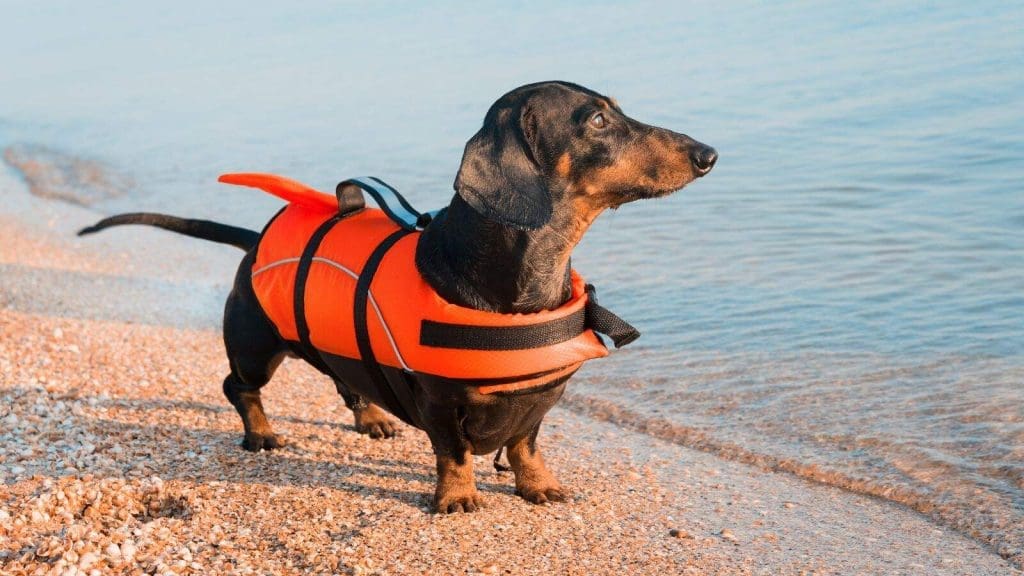

If your dog has a low activity level or isn’t used to jumping, we’d recommend taking higher-impact obstacles, like a dog agility hoop, slower and in moderation. Your dog can and still have a great time learning the behavior without trying to jump through hoops they aren’t conditioned to. Imagine how your muscles and joints would feel if you hadn’t run in years and tried to do hurdles. It is similar for your dog.
If your dog is visibly sore from performing any activity, give him rest for a few days and evaluate how he or she is doing at that point. Try out some less intense activities for a few days, such as DIY dog puzzles or DIY snuffle mats! The primary goal of beginner agility is to have fun, and we’re trying to avoid any negative associations or results from the activity. Take the training slowly and adjust your pace based on how your dog handles the activity.
A dog agility hoop can be one of your dog’s higher-impact obstacles, but it is safe if you take it slow and let your dog tell you how they are feeling. If you have an older or mobility-impaired dog, you may not get much past walking over the hoop and that’s fine! We’re here to have fun and bonus points aren’t given here for having the pup who can jump through the highest and smallest hoop.
If you want to try a lower-impact agility obstacle to start, check out our guides on dog agility tunnels and cavaletti for dogs! They’re a much better place to start for an older or less active dog than higher-impact obstacles like jumping or weaving.
Again, we recommend consulting with an expert (veterinarian, trainer, or other relevant professional) if you’re unsure of your dog’s ability to handle any new activity.
Equipment options for a dog agility hoop
Now let’s dive into a few different options for a dog agility hoop. We will provide options suitable for inside and outside use, as well as options if you want to do beginner agility on a budget, like to DIY your equipment, or just want to buy a premade setup.
Temporary hoop configurations


If you want to try out using a dog agility hoop with your pup without spending any money, we have you covered!
To start, what we’ll need to do is to find two different items to use as sides for your hoop. Some of our favorites are couch backs, a hallway, vertical dog beds, or even two close trees. Don’t be afraid to get creative here, your dog won’t care if it’s not pretty!
Next, we’ll get a barrier to use as the bottom. We recommend starting at a walkable height if your pup isn’t familiar with the behavior. Something like a broom handle, shovel, yoga blocks, or even a rope works great, depending on your situation.
Finally, we’ll need a top. If you’re using a stool or chair, you can place a dog bed or broom on top. If you’re outside, ropes or string work excellent and are easy to remove when you’re finished. We recommend keeping the distance between the two bars to be between your dog’s total height and torso height, starting closer to their total height. This will make it much easier and safer to teach your pup, and you can always change the height later.
As a note, it’s easy to change both the bottom and top bars when you’re ready. If you’re inside, yoga blocks, dumbbells, or even buckets are easy and available to most. If you’re using something light, like a broom, painter’s tape can be used to hold it against the wall temporarily. For outside use, string or rope, buckets, or even landscape edgers make great options!
Beginner options for a dog agility hoop


This is our favorite option for a dog agility hoop and the one we use the most often.
A hula hoop makes the perfect beginner option for a dog agility hoop. They’re cheap, readily available, and easy to store! The only real con is that you’ll have to prop or hold it up when you’re using it.
We found ours for sale at Walmart for $3, but can’t find a similarly priced one to share. Any hula hoop, like this hula hoop from Target, is perfect for use as a hoop. We recommend going in person so you can make sure the hoop is appropriately sized for your pup.
We braced our hoop between a couch and an ottoman, essentially just jamming it between them. It worked great inside for our pups! If you have an object to hang it from, like a tree or some other anchor point above you, you won’t even have to hold it.
How to make your DIY dog agility hoop
If you’re interested in building your own DIY dog agility hoop, it can be done for $15 or less! It’s extremely similar to our DIY for the dog agility jump with a minor change.
For materials, we’ll need some ½ or ¾-inch PVC tubing, or similar material. We went with ¾-inch PVC because we had some extra from a previous project, but ½ is completely fine. This isn’t a weight-bearing obstacle, so it doesn’t need to be particularly sturdy.
Here’s a list of supplies you’ll need:
- 10 ft of PVC pipe (2×5 ft sections are what we utilized)
- 2 PVC 90-degree elbow fittings
- 4 PVC T fittings
- 4 PVC caps (optional, but recommended for waterproofing if you want to leave it outside)
We’ll also need the following tool:
- PVC cutting tool (if you don’t already have something to do this with)
We’ll list what we did for ours, but you can modify this easily if you need a different-sized dog agility hoop for your pup.
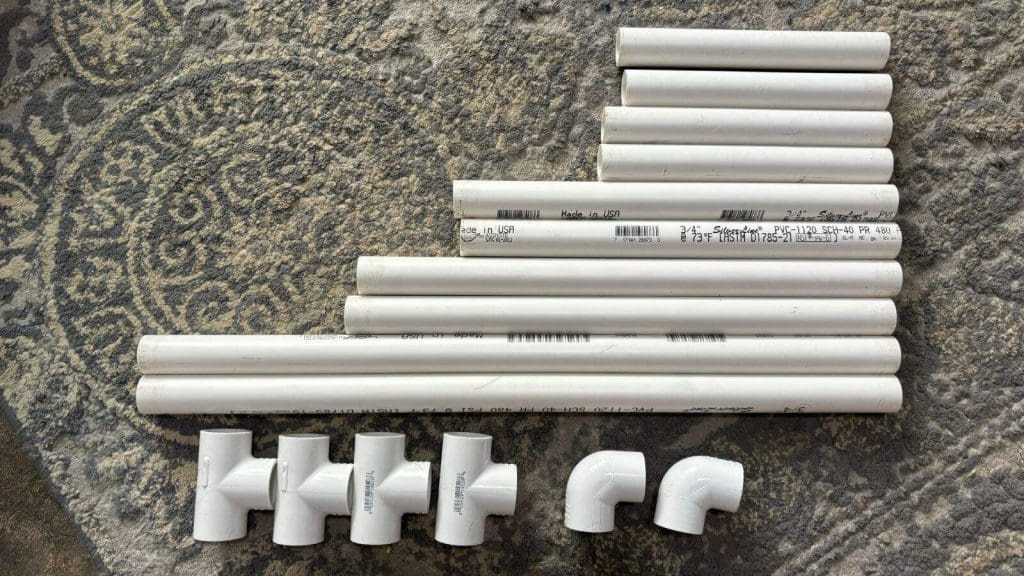

To make the hoop portion, we cut 2×20 in sections and 2×14 in sections. To put this together, use the 90-degree elbows for the top and place the 2 Ts so that the open end is facing toward the bottom. The end of this step should look like the image below.


To make the legs, we cut 2×12 in sections and 4×7 in sections. You can use any scraps you have for the leg supports. The longer they are, the more stable your DIY dog agility hoop will be.
To assemble everything, place the longer 12-in section on the perpendicular (side that isn’t a straight line) side of the T. That’s it! Place the legs in the open spot on the hoop portion and you’re good to go!


One of the reasons we love this design is that you can swap one of the 7-in and 12-in segments to lower the hoop or completely disconnect it when you’re learning the behavior. We don’t recommend using PVC cement because it’s pretty stable and your dog shouldn’t be hitting the equipment
Other notes & modifications
If you like the DIY dog agility hoop idea but don’t like that it’s not easily adjustable, we wanted to give you an additional idea for designing your own.
If you create the same design, you can modify the dimensions to be large enough to accommodate a hula hoop inside of it. This can essentially turn the design into a frame to support a hula hoop. To accomplish this, here are the supplies you’ll need to accomplish this:
- 5 ft of the same size pipe as before
- 4 PVC couplers (Same size as the pipe)
You will use the couplers to extend the size of the DIY dog agility hoop to match whatever the size of the hoop you have. For example, our hoop pictured is 24 inches, so we made the frame 27 inches to hold it. You can disassemble it if you want to go back to the normal size. Use rope, string, or zip ties to secure the hula hoop.


There are a few different benefits to this that will make your life easier.
First, it will allow you to hang a hula hoop inside of the PVC. This will give you the ability to adjust the height of the hoop. If you use string, you can slide it up or down to accommodate different sizes and abilities of pups. If you don’t want to use string, you can swap out the pieces of PVC to change the height.
Second, the configuration will be very stable and eliminate having to hold the hoop. This will also prevent the hoop from rotating if you only attach it to a single point.
Third, it’ll allow you to easily change the hoop size in the future if you need to go up or down a size. This is great during the training period to allow for a larger hoop if your pup is still getting used to it. All you’ll have to do is untie the old hoop and put the new one in.
We like the flexibility and adjustability of this modification and think it shines if you have two very different-sized dogs, such as a small breed and a large breed.
Troubleshooting common issues
Troubleshooting the behavior for a dog agility hoop is similar to our guide on troubleshooting issues with a dog agility jump. The only difference is that your dog has sides and a top instead of just a bar to clear.
Trying to go under or around the dog agility hoop
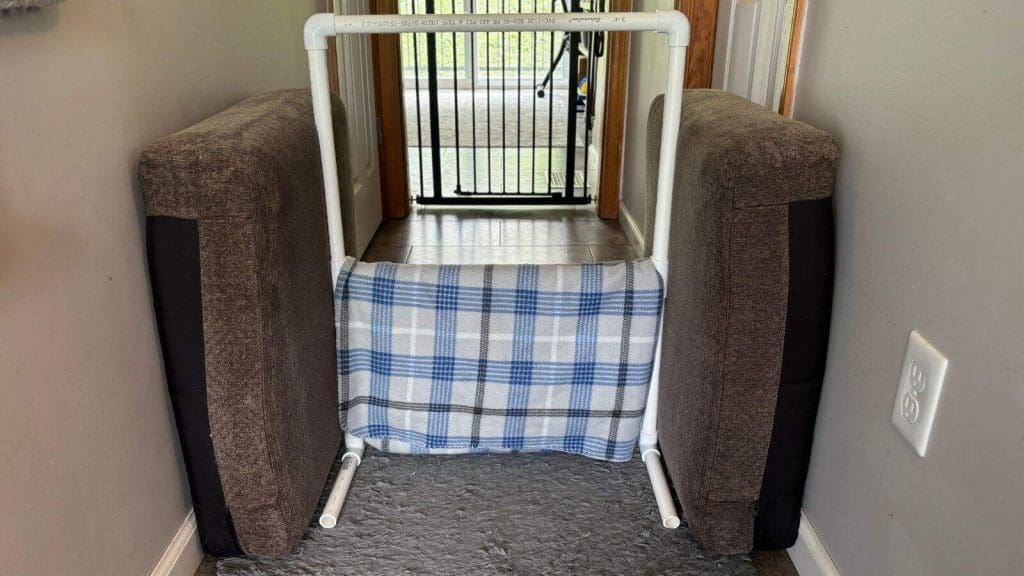

If your dog is trying to avoid the hoop and not just stopping in front of it, this is the section for you.
To work through this, we’ll be configuring our setup so that it is harder for your dog to fail. Our goal is to make it as easy as possible for our dog to perform the behavior correctly and then gradually progress to your goal.
For example, if your dog is trying to go around your hoop, block off the sides. If you have a hallway or other narrower area, this is perfect for the learning period. If not, we recommend placing the hoop between objects that are large enough that your pop won’t go around. Couch backs, chairs, or even vertical dog beds make great options for this. If we can’t use a hallway, our go-to is dog beds held up by chairs.
If your pup is trying to go under, block the bottom of the hoop off so this isn’t possible. You can use anything for this, but some of our favorites are dog beds, elevated dog beds, or even a couch cushion.
You can remove these guide rails from your dog agility hoop later once your pup understands the expected behavior and is more comfortable with it.
Not wanting to go over the hoop
The second most common issue with a dog agility hoop is also (relatively) easy to address. This is your dog being unwilling to go through the hoop. There are two ways to get past this issue, but we recommend combining both of them.
First, we’ll want to make sure to lower the hoop to a height that won’t be as intimidating for your pup. We recommend starting with it touching the ground, so your dog can get used to going through it. Slowly, we’ll work up to walking over a tall obstacle and then, finally, a very low jump. We want to take this slow and make sure it’s still fun for both you and your dog.
The second method is by using a more persuasive lure, or even a bribe, to get your dog to perform the behavior. We recommend making sure there isn’t any other reason your dog doesn’t want to go through your hoop, such as a less obvious health issue, before trying to convince your dog to go through.
For example, rear leg injuries (like Goomba’s CCL tears) typically show up as gradual behavior adjustments from your dog, like shifting more weight to their front legs or no longer wanting to walk upstairs or jump. If you want to learn more, check out our article on the symptoms of a torn ACL in dogs.
You may have to combine all of these techniques to be successful and that’s fine! If you have a particularly food-motivated dog, like Prim for us, it will likely go much faster for you. If not, try to train before your dog’s meal so they’re more likely to be motivated.
Conclusion
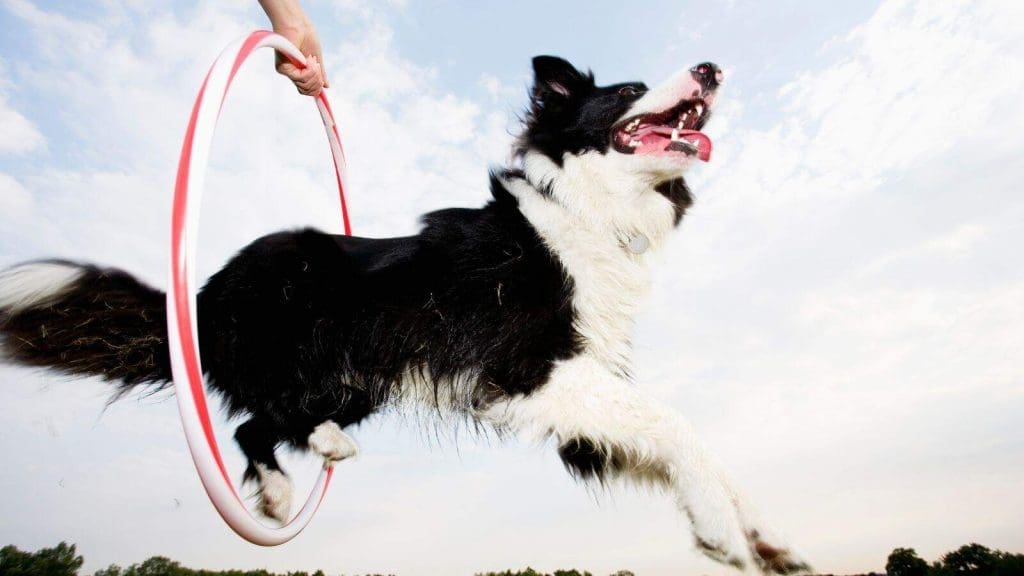

Teaching your pup how to use a dog agility hoop can be easy and rewarding for both you and your pup! We recommend trying the temporary methods first to make sure you and your dog enjoy practicing agility before building or buying equipment. You can always purchase a better hoop later or create a more permanent setup.
We love to see your success with your dog agility hoop or any other type of agility equipment! Share photos of your dog trying out your dog agility hoop with us on Instagram by tagging @therulybully.
Have fun!
